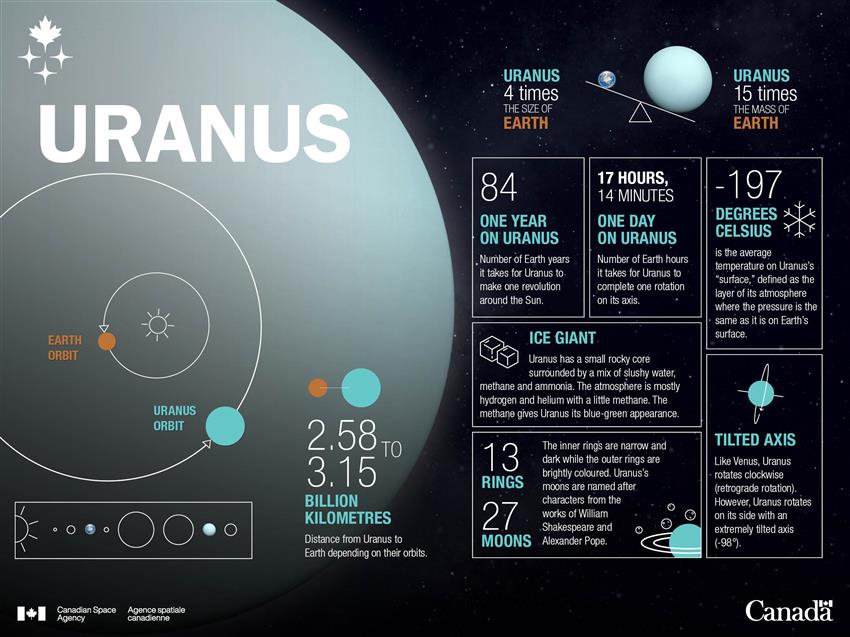Uranus in numbers – Infographic

Description
This infographic features an image of Uranus along with a series of facts that highlight some of the differences between Uranus and Earth. (Credit: Canadian Space Agency)
Text version
This infographic features an image of Uranus along with a series of facts that highlight some of the differences between Uranus and Earth.
- A graphic shows that Uranus and Earth orbit the Sun in the same direction.
- The distance from Earth to Uranus ranges from 2.58 to 3.15 billion kilometres depending on their orbits.
- Uranus is 4 times the size of Earth.
- Uranus is 15 times the mass of Earth.
- It takes Uranus 84 Earth years to make one revolution around the Sun.
- It takes Uranus 17 hours and 14 minutes in Earth time to complete one rotation on its axis.
- The average temperature on Uranus's "surface" is -197 degrees Celsius. The surface is defined as the layer of its atmosphere where the pressure is the same as it is on Earth's surface.
- Uranus is an ice giant. It has a small rocky core surrounded by a mix of slushy water, methane and ammonia. The atmosphere is mostly hydrogen and helium with a little methane. The methane gives Uranus its blue-green appearance.
- Uranus has 13 rings. The inner rings are narrow and dark while the outer rings are brightly coloured. Uranus has 27 moons named after characters from the works of William Shakespeare and Alexander Pope.
- Uranus rotates on its side, and its axis is tilted at 98 degrees. Like Venus, Uranus rotates clockwise. This is called retrograde rotation.
File size: 0.34 MB
Image size: 2400 x 1800 pixels
Resolution: 144 dpi
Image date: November 24, 2022
Useful link(s)
Copyright / Permission to reproduce
- Date modified: